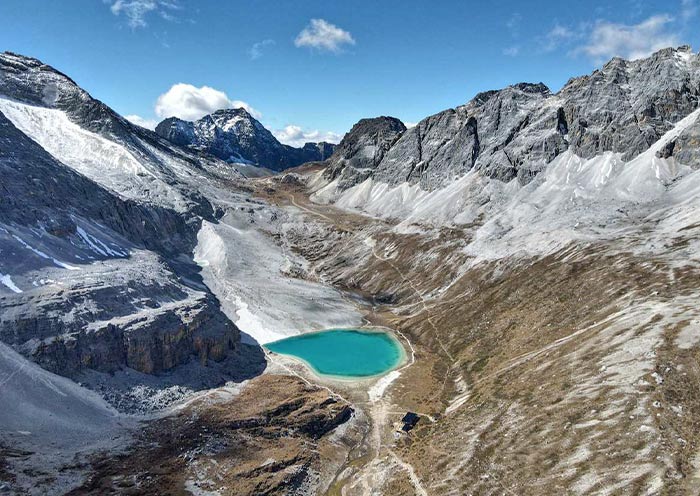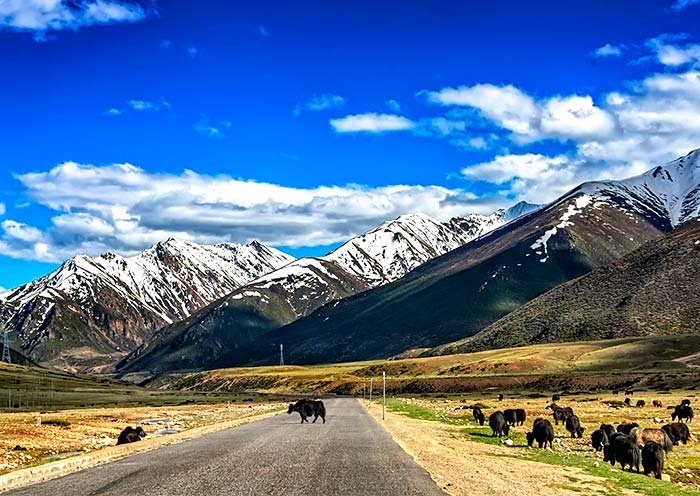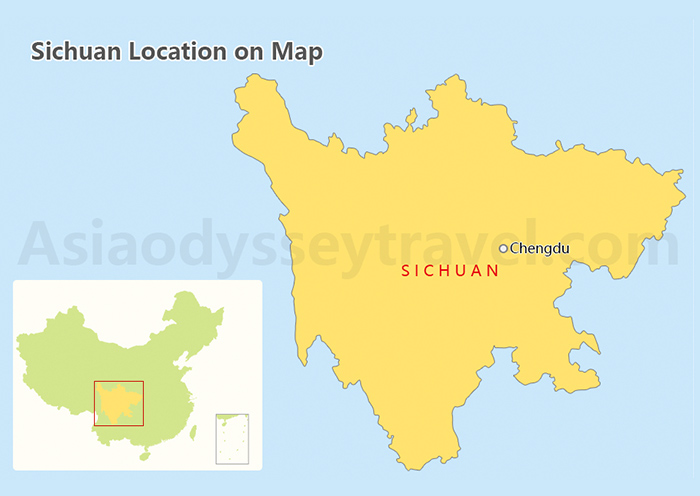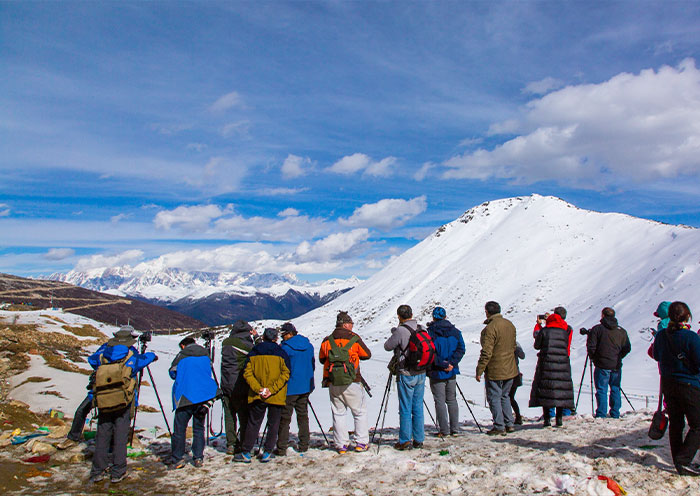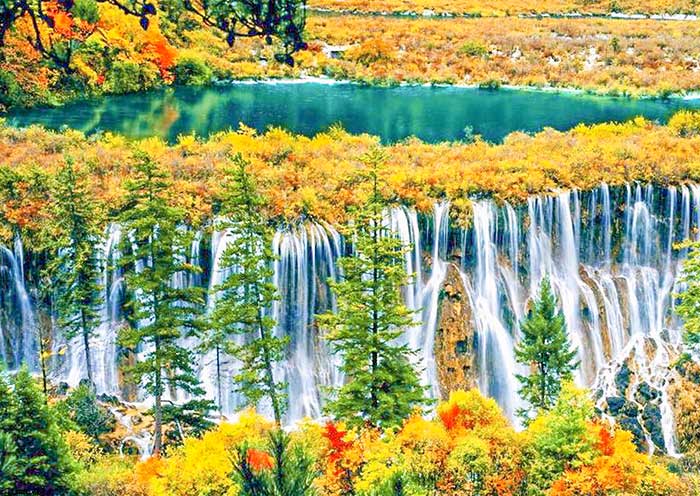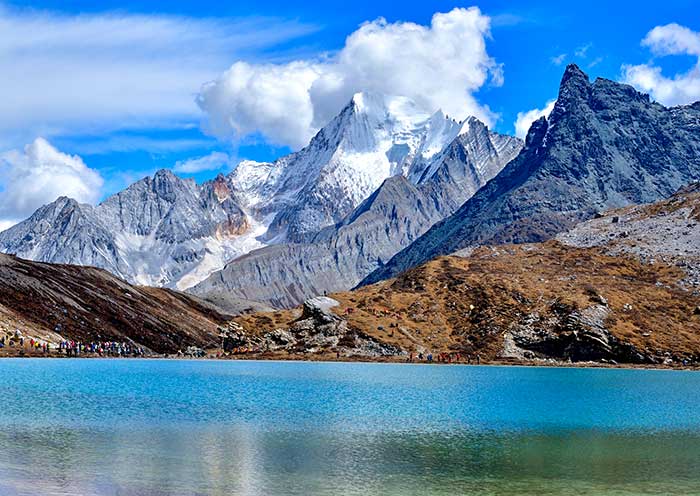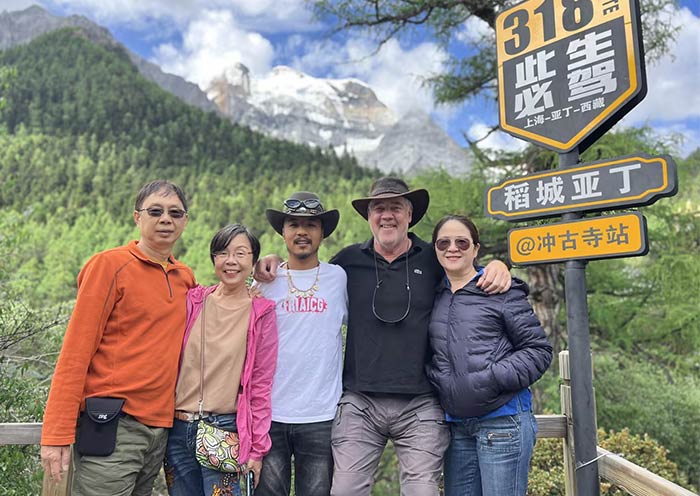Where is Western Sichuan?
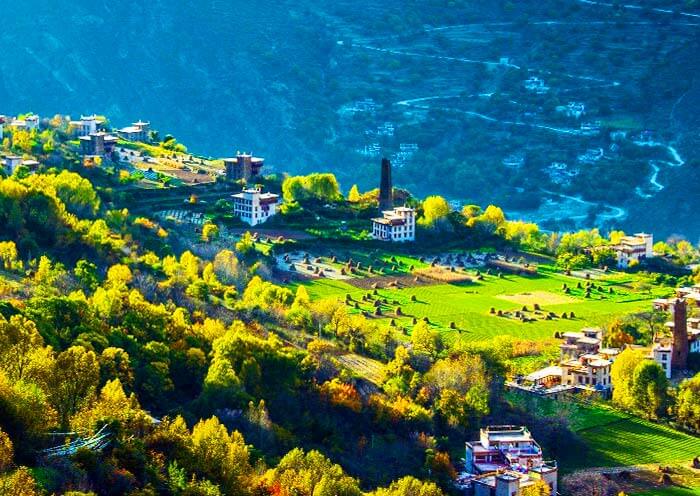
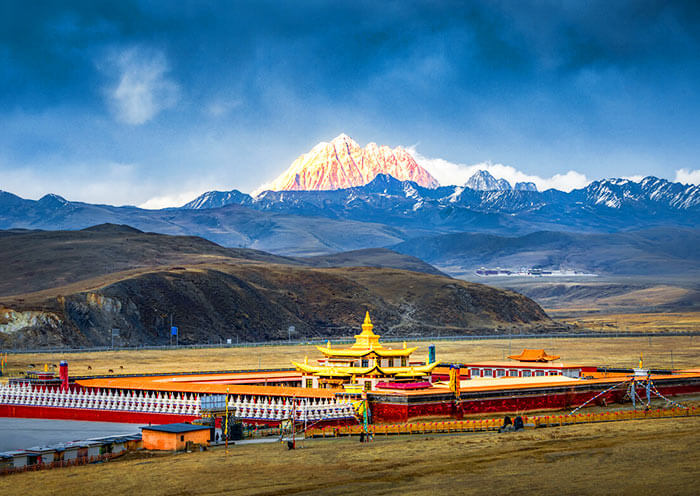
Western Sichuan, also known as West Sichuan or the western part of Sichuan Province, is located in southwestern China. It is part of the larger Sichuan Province and encompasses the western region of the province, bordering Tibet Autonomous Region to the west.
To give you a general idea, Western Sichuan is situated to the west of the provincial capital, Chengdu. It covers an extensive area, including the western parts of the Aba Tibetan and Qiang Autonomous Prefecture, Garze Tibetan Autonomous Prefecture, and parts of other administrative divisions within Sichuan Province.
The Sichuan Tibet Highway, also known as China National Highway G318 and G317, run through Western Sichuan, connecting Chengdu to Lhasa, the capital of Tibet Autonomous Region. This highway is a popular route for travelers exploring the region.
Why Travel to Western Sichuan?
Traveling to Western Sichuan, particularly the region along the Sichuan Tibet Highway, offers a unique and enriching experience. Here are some reasons why you should consider exploring this captivating part of China:
- Scenic Beauty:
Western Sichuan is known for its breathtaking landscapes. The region boasts majestic snow-capped mountains, deep valleys, pristine alpine lakes, lush grasslands, and stunning natural scenery. Traveling through this area allows you to witness the awe-inspiring beauty of the Tibetan Plateau and its unique ecosystems.
- Cultural Diversity:
Western Sichuan is home to diverse ethnic groups, including Tibetans, Qiang people, and other minority communities. This region offers an opportunity to immerse yourself in their rich traditions, colorful festivals, distinctive architecture, and vibrant local customs. You can visit Tibetan monasteries, explore traditional villages, and interact with friendly locals to gain insights into their way of life.
- Tibetan Buddhism:
Western Sichuan is deeply influenced by Tibetan Buddhism. It is dotted with numerous monasteries, including the renowned Larung Gar Buddhist Academy, where you can witness the devotion and spirituality of Tibetan Buddhist practitioners. Exploring these sacred sites provides a chance to experience the tranquility and spiritual ambiance of Tibetan Buddhism.
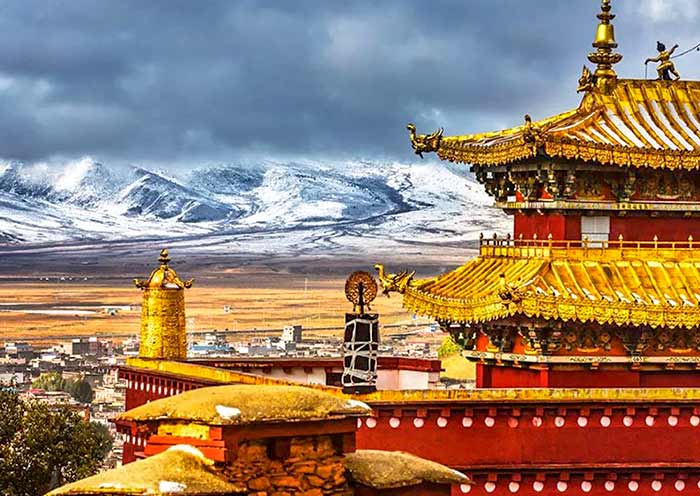

- Adventure and Outdoor Activities:
Western Sichuan is a paradise for adventure enthusiasts. The region offers opportunities for trekking, hiking, mountaineering, and camping amidst stunning natural landscapes. You can embark on challenging treks in areas such as Jiuzhaigou, Yading Nature Reserve, and Mount Siguniang. The rugged terrain and remote locations add an element of excitement and exploration to your journey.
- Wildlife and Nature Conservation:
Western Sichuan is home to a diverse range of wildlife, including giant pandas, Tibetan macaques, golden monkeys, and various bird species. Exploring the region provides a chance to witness these fascinating creatures in their natural habitats. Additionally, Western Sichuan is committed to nature conservation, and visiting protected areas supports conservation efforts and promotes sustainable tourism.
- Authentic Tibetan Cuisine
Western Sichuan offers a chance to savor authentic Tibetan cuisine. From butter tea and yak meat dishes to momos (Tibetan dumplings) and tsampa (roasted barley flour), you can indulge in the distinctive flavors of Tibetan gastronomy. Trying local delicacies adds a gastronomic dimension to your travel experience.
- Off-the-Beaten-Path Exploration
Western Sichuan is relatively less explored by mainstream tourists compared to other parts of China. This means you can discover hidden gems, pristine landscapes, and cultural treasures beyond the typical tourist trail. The sense of adventure and the opportunity to explore lesser-known destinations make Western Sichuan a rewarding destination for intrepid travelers.
Traveling to Western Sichuan provides a unique blend of natural beauty, cultural richness, spiritual exploration, and adventure. It offers a chance to escape the crowds, immerse yourself in stunning landscapes, and connect with the local culture and traditions of this extraordinary region.
Top 10 Attractions & Destinations in Western Sichuan
Western Sichuan is a region of remarkable natural beauty, rich cultural heritage, and unique experiences. Here are some of the top attractions and destinations to explore in Western Sichuan:
1.Yading Nature Reserve - Last Shangri-La
Location: In Daocheng County, Garze Tibetan Autonomous Prefecture, southwest of Chengdu, 800 kilometers away by road.
Highlights: Yading Nature Reserve is known for its three sacred peaks: Xiannairi, Yangmaiyong, and Xianuoduoji. These snow-capped peaks are surrounded by pristine lakes, including the popular Milk Lake, Pearl Lake, and Five-Color Lake.
Activities: Hiking is a popular activity in Yading. You can explore scenic trails that lead you to high-altitude lakes, serene meadows, and breathtaking viewpoints. The Short-Line hiking to Pearl Lake and Long-Line Hiking to Milk Lake are popular hiking routes in Daocheng Yading.
2.Mount Siguniang - 4 Mountains & 3 Valleys
Location: In Xiaojin County, Aba Tibetan and Qiang Autonomous Prefecture, northwest of Chengdu, 200 kilometers away by road.
Highlights: Mount Siguniang is a UNESCO World Heritage site and features four distinct peaks, each over 5,000 meters in elevation, and 3 picturesque valleys. The natural beauty of the area, including valleys, glaciers, and alpine forests, is truly awe-inspiring.
Activities: Mountaineering and trekking are popular activities in Siguniang. The Haizi Valley and Changping Valley offer scenic hiking trails with stunning views. You can also visit the charming Rilong Town at the base of the mountain.
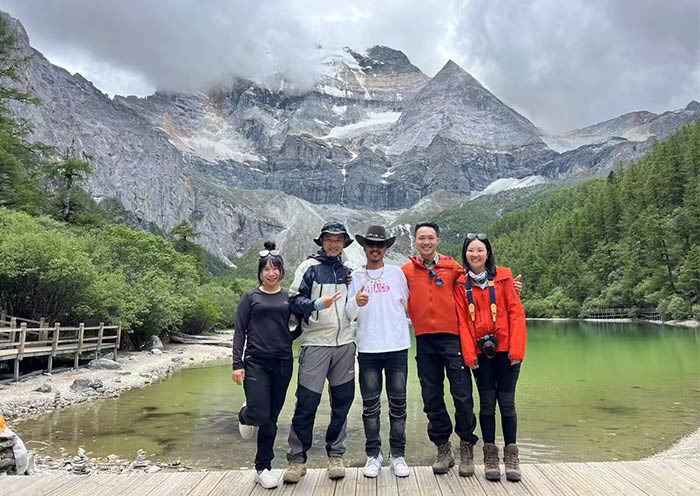
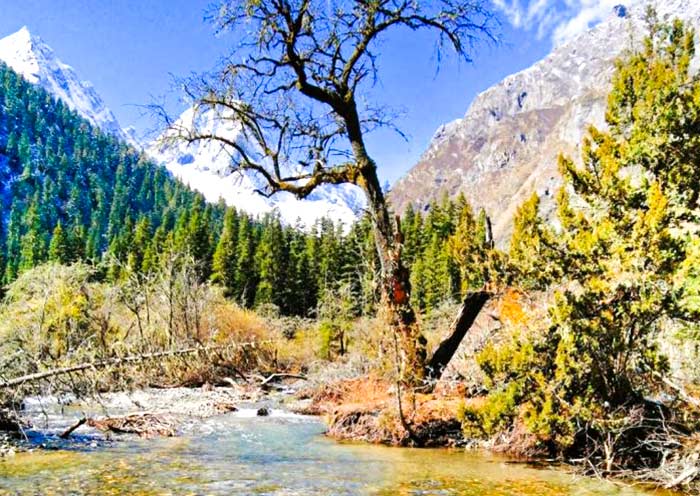
3.Danba Tibetan Villages - Terraced Tibetan Community
Location: Danba County, Aba Tibetan and Qiang Autonomous Prefecture, northwest of Chengdu, 300 kilometers away by road.
Highlights: The Tibetan villages in Danba are known for their distinctive ancient watchtowers, which are architectural marvels and symbols of the region's history. The villages are set amidst breathtaking landscapes with terraced fields and traditional Tibetan homes. Famous Tibetan Villages are: Jiaju Tibetan Village, Zhonglu Tibetan Village, Suopo Tibetan Village.
Activities: Explore the traditional Tibetan villages and interact with the friendly locals. Visit the ancient watchtowers, such as Suopo Watchtower, and learn about the unique culture and customs of the Tibetan people. Enjoy scenic hikes in the surrounding countryside.
4.Wolong Panda Base - Most Comfortable Base for Panda
Location: Wenchuan County, Aba Tibetan and Qiang Autonomous Prefecture, northwest of Chengdu, 100 kilometers away by road.
Highlights: Wolong Panda Base, located within the Wolong Nature Reserve, is one of the most renowned and important centers for giant panda research, conservation, breeding, and rehabilitation. It serves as a significant component of the UNESCO World Heritage site. It offers a chance to see these adorable creatures up close and learn about conservation efforts.
Activities: Observe pandas in their natural habitat, participate in volunteer programs to assist with panda care, and learn about panda conservation through educational exhibits and presentations.
5.Xinduqiao - Paradise for Photographers
Location: Kangding, Garze Tibetan Autonomous Prefecture, west of Chengdu, 350 kilometers away by road.
Highlights: Xinduqiao is renowned for its stunning landscapes, often described as a "paradise for photographers." The combination of snow-capped mountains, expansive grasslands, Tibetan-style houses, and dramatic lighting conditions creates a photographer's dream.
Activities: Capture breathtaking photos of the landscapes and the unique Tibetan elements. Take leisurely walks or rent a bike to explore the area at your own pace. Enjoy the local hospitality and savor Tibetan cuisine.
6.Tagong: Grassland & Monastery
Location: Kangding, Garze Tibetan Autonomous Prefecture, west of Chengdu, 400 kilometers away by road.
Highlights: Tagong Grassland offers vast, open meadows with a backdrop of snow-capped mountains. It is a place where you can experience the nomadic Tibetan way of life and witness the traditional culture of the region.
Activities: Visit the Tagong Monastery, an important Tibetan Buddhist site, and join in the rituals and prayers. Explore the grasslands on horseback or hike to nearby hills for panoramic views. Engage with local herders and learn about their traditions.
7.Mugecuo Scenic Area
Location: Kangding, Garze Tibetan Autonomous Prefecture, west of Chengdu, 300 kilometers away by road.
Highlights: Mugecuo Scenic Area is a nature reserve with picturesque lakes, dense forests, and waterfalls near the Kangding City. It offers a tranquil and serene environment away from the bustling cities.
Activities: Take a leisurely stroll around the lakeshores, rent a boat to explore the crystal-clear lakes, and enjoy picnics amidst the beautiful surroundings. Hike through the forests and visit the scenic waterfalls, such as Pearl Waterfall and Rainbow Waterfall.
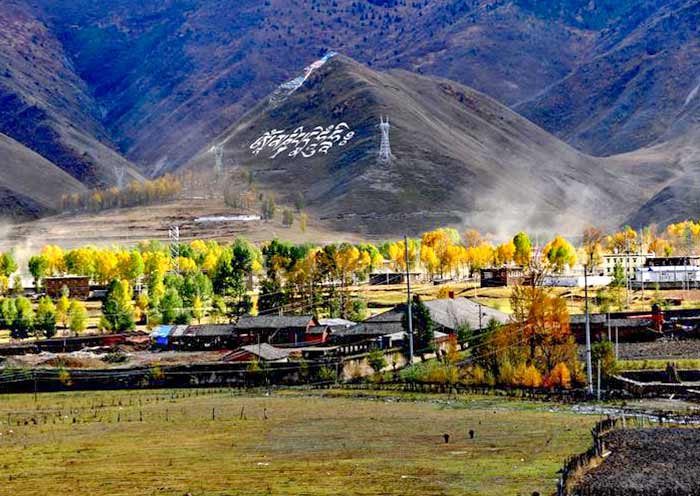
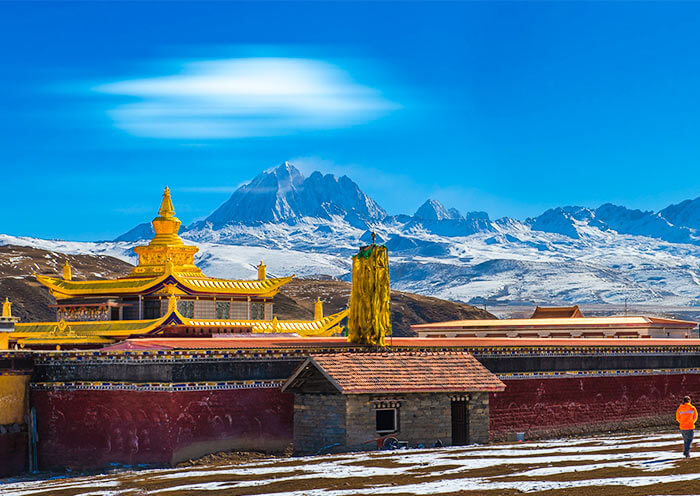
8.Lithang: Letong Ancient Town & Changqingchun Ke'er Monastery
Location: Lhitang, Garze Tibetan Autonomous Prefecture, west of Chengdu, 550 kilometers away by road.
Highlights: Lithang is a Tibetan town with a rich cultural heritage and stunning landscapes. Letong Ancient Town is known for its well-preserved Tibetan architecture, and Changqingchun Ke'er Monastery is a significant religious site.
Activities: Explore the narrow streets and alleys of Letong Ancient Town, visit the local market, and sample Tibetan delicacies. Visit Changqingchun Ke'er Monastery and witness the monks' rituals and prayers. Enjoy the panoramic views of the surrounding mountains and grasslands.
9.Moshi Park Scenic Area
Location: Daofu County, Garze Tibetan Autonomous Prefecture, west of Chengdu, 380 kilometers away by road.
Highlights: Moshi Park Scenic Area is known for its distinctive stone forest, which is the only one of its kind on the plateau in China. The geological formations have been shaped over thousands of years, resulting in a breathtaking landscape reminiscent of the South China Karst.
Activities: Embark on a sightseeing bus tour that allows for a comfortable exploration of the area. Marvel at the extraordinary stone forest, with its towering rock formations resembling trees and pillars, creating a surreal and awe-inspiring sight. Photography enthusiasts will find ample opportunities to capture the unique geological features, play with light and shadow, and create striking images.
10.Qingcheng Mountain & Dujiangyan
Location: Dujiangyan, Chengdu City, northwest of Chengdu, 60 kilometers away by road.
Qingcheng Mountain, located in Dujiangyan City, is one of the birthplaces of Taoism and a UNESCO World Heritage site. It is revered as a spiritual and cultural center, offering a blend of natural beauty and historical sites. Visitors can hike through lush forests, visit ancient Taoist temples, and enjoy panoramic views from the mountain peaks.
Dujiangyan is a historic irrigation system and a UNESCO World Heritage site located in Dujiangyan City. Built over 2,000 years ago, it is an engineering marvel that effectively controls the flow of the Minjiang River and provides water for irrigation to the Chengdu Plain. Visitors can explore the ancient system, walk along the pathways, and learn about its significance in Chinese history.
These attractions in Western Sichuan provide a diverse range of experiences, from natural wonders and cultural heritage sites to historical landmarks and unique geological formations. Whether you're seeking outdoor adventures, spiritual exploration, or stunning photography opportunities, these destinations offer a glimpse into the beauty and cultural richness of Western Sichuan.
4 Best Hiking Trails in Western Sichuan
Discover the best hiking trails in Western Sichuan, a haven for outdoor enthusiasts. Spanning across 236,000 square kilometers of the Western Sichuan Plateau, this region boasts breathtaking natural landscapes that have stood for millennia. Marvel at towering glaciers, majestic snow-capped peaks, and awe-inspiring vistas. From meadows and lakes to canyons and pristine forests, Western Sichuan offers a diverse range of natural wonders that will leave you spellbound. Many hiking enthusiasts consider it an "epic hiking paradise." While the snow lingers on the mountains, the grasslands burst with vibrant greenery, making April to May the best time for hiking in Western Sichuan.
1. Pearl Lake Hiking in Yading Nature Reserve
This is a short hiking trail within the Yading Nature Reserve in Daocheng. The hike starts at Chonggu Temple and ends at Pearl Lake, covering a round trip of only 4 kilometers. The elevation ranges from 3800 to 4100 meters, and it takes approximately 2-3 hours to complete. Along the way, you can enjoy the views of temples and the majestic Mount Xiannairi in the Yading Three Sacred Mountains, as well as the high-altitude meadows (Chonggu Meadow) and the final destination, Pearl Lake.
2. Milk Lake Hiking in Yading Nature Reserve
This is a longer hiking trail within the Yading Nature Reserve. The hike starts at Luorong Cattle Farm and ends at Milk Lake or Five-Color Lake. The round trip covers approximately 11 kilometers, with an elevation ranging from 4200 to 4700 meters. It takes around 6-7 hours to complete and involves hiking at high altitudes. Along the way, you can admire the high-altitude meadows (Luorong Cattle Farm), the Yangmaiyong and Xianuoduoji peaks of the Yading Three Sacred Mountains, and the Milk Lake and Five-Color Lake at the endpoint.
3. Changping Valley Hiking in Mt. Siguniang
Changping Valley is the second valley among the three valleys in the Mount Siguniang Scenic Area. The hiking distance can vary depending on your physical fitness. The starting point of the hike is Sigula Temple, the last stop of the sightseeing bus in the scenic area. The usual endpoint is Muluozi, with a round trip of 18 kilometers, an elevation ranging from 3200 to 3600 meters, and a duration of approximately 6-7 hours. Along the way, you can enjoy the views of Yaomei Feng (Maiden Peak) in Mount Siguniang, pristine forests, the Red Stone Beach, high-altitude meadows, and more. If you have sufficient stamina, you can also plan a multi-day hiking trip, crossing from Changping Valley to Bipeng Valley, another scenic area in Western Sichuan.
4. Haizi Valley Hiking in Mt. Siguniang
Haizi Valley is the highest of the three valleys in Mount Siguniang, with an average elevation ranging from 3400 to 3900 meters. It offers an excellent vantage point to admire the four peaks. The first half of the hike in Changping Valley mainly consists of high-altitude meadows, providing clear views of the four peaks on a sunny day, while the second half features high-altitude lakes. The one-way hiking distance is 19 kilometers, starting from the entrance of the scenic area. It is recommended to hike to the first half of the valley (Chaoshanping) and return, covering a total of 7 kilometers and taking approximately 3 hours.
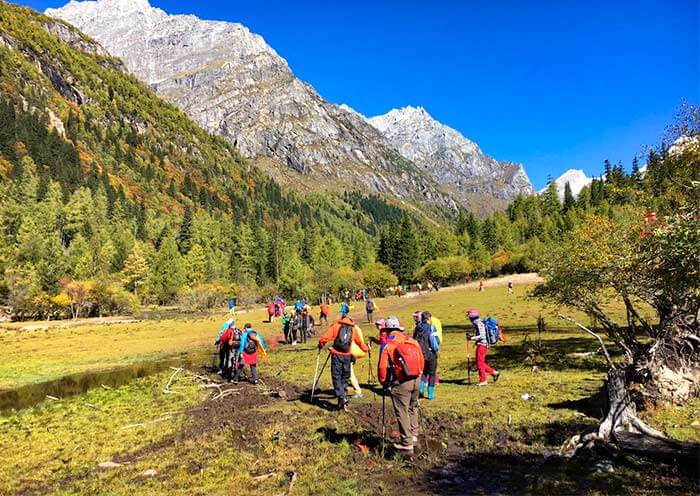
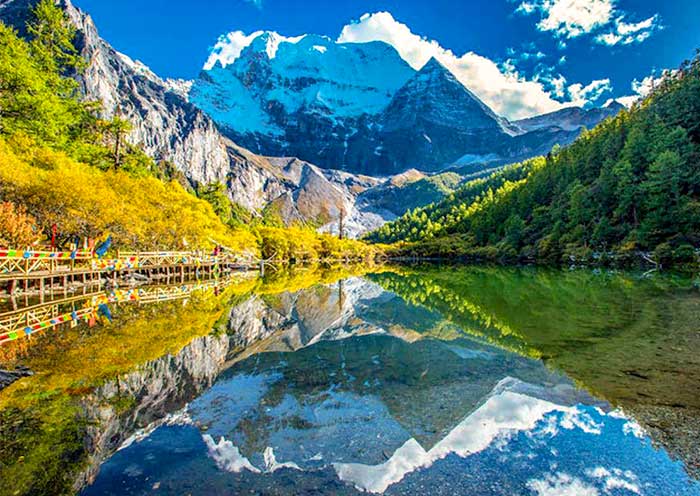
3 Classical Travel Routes (Itineraries) in Western Sichuan
Chengdu, the capital city of Sichuan, serves as the gateway to Western Sichuan. Regardless of your destination within Western Sichuan, Chengdu is the perfect starting and ending point due to its well-developed transportation system and favorable location. It is highly recommended to spend one or two days exploring the city's sights before embarking on a Western Sichuan Tour.
Here are 3 most popular travel routes in Western Sichuan starting from Chengdu:
1. North Route of Western Sichuan
Route: Chengdu - Dujiangyan - Qingcheng Mountain - Wolong Panda Base - Mount Siguniang - Chengdu:
Attractions: Dujiangyan Irrigation System, Qingcheng Mountain, Wolong Panda Base, Mount Siguniang
Duration: 3-4 days
Day-by-Day Itineraries:
- Day 1: Start from Chengdu and explore the top attractions including Jinli Street, Wenshu Monastery, Chengdu Rinmin Park.
- Day 1: Head to Dujiangyan to visit the Dujiangyan Irrigation System, an ancient engineering marvel. Proceed to Qingcheng Mountain and explore its temples and scenic beauty.
- Day 2: Visit the Wolong Panda Base, where you can observe and learn about giant pandas in their natural habitat in the morning. Then turn to the Mt. Siguniangshan, known for its stunning peaks and hiking trails. Enjoy the picturesque landscapes and engage in outdoor activities.
- Day 3: Spend another day exploring Mount Siguniang and its surrounding areas.
- Day 4: Return to Chengdu.
The North Route of Western Sichuan is a short and diverse itinerary that showcases the natural beauty and cultural highlights of the region. This route offers a perfect blend of history, nature, and wildlife, making it an ideal choice for those seeking a compact and rewarding travel experience in Western Sichuan.
2. Grand Loop of Western Sichuan
Route: Chengdu - Kangding - Lithang - Yading - Lithang - Xinduqiao - Danba - Mount Siguniang - Wolong Panda Base - Dujiangyan - Chengdu
Attractions: Kangding, Lithang, Yading Nature Reserve, Xinduqiao, Danba Tibetan Villages, Mount Siguniang, Wolong Panda Base, Dujiangyan Irrigation System
Duration: 10-12 days
Day-by-Day Itineraries:
- Day 1: Begin your journey in Chengdu and explore the city's famous attractions.
- Day 2: Travel from Chengdu to Kangding via Xinduqiao, known for its picturesque landscapes. Continue to Yajiang.
- Day 3: Journey from Yajiang to Litang, a town with a rich Tibetan cultural heritage, and then proceed to Daocheng County.
- Day 4: Explore the breathtaking Yading Nature Reserve and enjoy a short-line hike.
- Day 5: Continue exploring Yading Nature Reserve with a long-line hike to fully appreciate its natural beauty.
- Day 6: Travel from Daocheng to Lithang, passing through Yajiang, and then return to Xinduqiao.
- Day 7: Visit Tagong and experience its vast grasslands and Tibetan Buddhist culture. Proceed to Danba.
- Day 8: Explore the enchanting Danba Tibetan Villages, known for their ancient architecture and stunning landscapes.
- Day 9: Journey to Siguniang Town and immerse yourself in the awe-inspiring beauty of Mount Siguniang.
- Day 10: Visit the Wolong Panda Base, where you can observe giant pandas, and then head to the Dujiangyan Irrigation System. Return to Chengdu.
The Grand Loop of Western Sichuan is an extensive and immersive itinerary that takes you through the stunning landscapes and cultural gems of the region. This itinerary offers a comprehensive exploration of Western Sichuan, combining natural wonders, cultural immersion, and wildlife encounters. From the stunning mountains and grasslands to the ancient Tibetan villages and adorable pandas, the Grand Loop of Western Sichuan provides an unforgettable journey through the region's diverse and captivating landscapes.

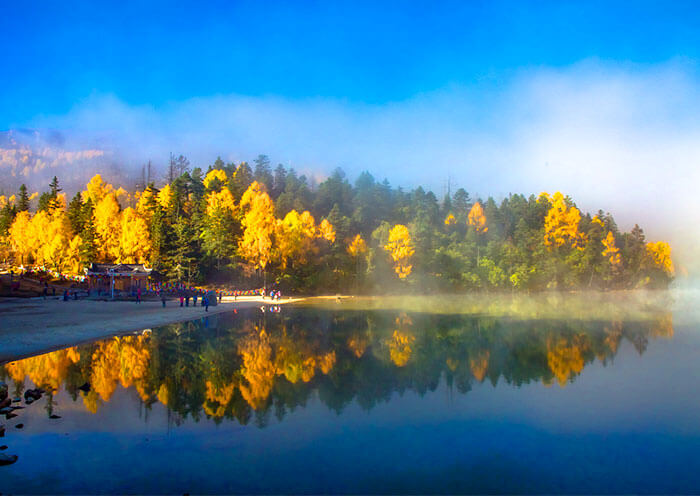
3. Small Loop of Western Sichuan
Route: Chengdu - Wolong Panda Base - Mt. Siguniang - Danba Tibetan Villages - Tagong - Xinduqiao - Kangding - Chengdu
Attractions: Wolong Panda Base, Mount Siguniang, Danba Tibetan Villages, Tagong Grassland, Xinduqiao, Kangding
Duration: 5-7 days
Day-by-Day Itineraries:
- Day 1: Depart from Chengdu and visit the Wolong Panda Base, where you can observe and learn about giant pandas. Then turn to the Mt. Siguniangshan, known for its stunning peaks and hiking trails. Enjoy the picturesque landscapes and engage in outdoor activities.
- Day 2: Spend another day exploring Mount Siguniang and its breathtaking natural beauty and hiking trails.
- Day 3: Visit the picturesque Danba Tibetan Villages and immerse yourself in the local culture.
- Day 4: Proceed to Tagong and experience the vast grasslands and Tibetan Buddhist culture.
- Day 5: Head to Xinduqiao, known for its stunning landscapes and opportunities for photography. Then head to Kanging, the gateway to the Tibetan plateau, and experience its unique blend of cultures.
- Day 6: Return to Chengdu.
The Small Loop of Western Sichuan is a captivating itinerary that allows travelers to experience the best of the region in a condensed timeframe. The Small Loop of Western Sichuan provides a diverse and enriching travel experience, combining wildlife encounters, natural wonders, cultural immersion, and stunning scenery.
These travel routes offer a mix of natural wonders, cultural experiences, and historical sites, allowing you to discover the beauty of Western Sichuan. Whether you choose to explore the panda sanctuaries, visit ancient towns, or venture into the stunning mountain landscapes, these routes provide a memorable journey through this captivating region.
Best Time to Visit Western Sichuan
The best time to visit Western Sichuan is during the spring (April to June) and autumn (September to November) seasons. During these periods, the weather is mild, and the landscapes are vibrant with blossoming flowers or colorful foliage. However, specific attractions in Western Sichuan may have different optimal seasons.
Spring (April to June) in Western Sichuan
Spring in Western Sichuan offers comfortable weather for outdoor activities such as hiking. It's an excellent time to visit the Wolong Panda Base and observe adorable pandas. Another option is exploring the Danba Tibetan Villages, where you can witness the beauty of blooming pear blossoms.
Summer (July to August) in Western Sichuan
Summer is the peak tourist season in Western Sichuan, known for its cool and refreshing climate compared to other regions. Although there may be occasional rainfall, it helps alleviate the effects of high altitude. This season is ideal for visiting destinations like the Tagong Grassland or the Daocheng Yading Nature Reserve, where the grasslands are adorned with colorful wildflowers.
Autumn (September to November) in Western Sichuan
Autumn is considered the golden season in Western Sichuan, offering the most picturesque landscapes. It's the perfect time for photography enthusiasts and hikers. You can embark on stunning hikes through the canyons of Mount Siguniang or visit destinations like Daocheng Yading and Xinduqiao to capture the breathtaking beauty of the region.
Winter (December to February) in Western Sichuan
Winter brings snow and lower temperatures to Western Sichuan, particularly in high-altitude areas. However, this season offers a unique experience with fewer tourists. The Small Loop itinerary is recommended during winter as it involves lower altitudes and allows you to enjoy attractions such as the Wolong Panda Base and snow-capped mountains.
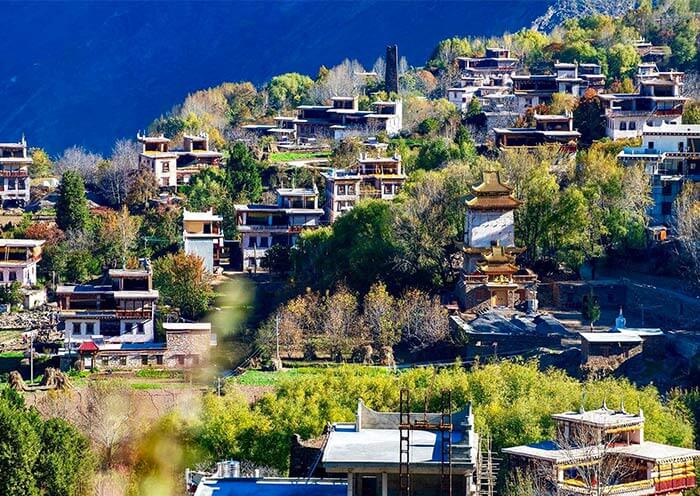
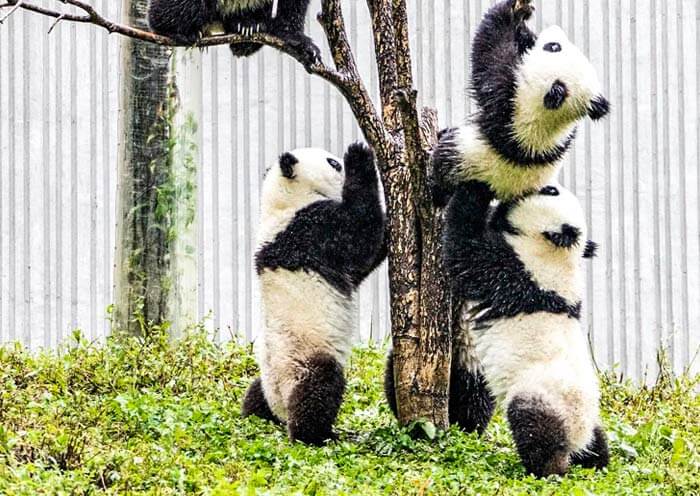
How to Get to & around Western Sichuan
To get to Western Sichuan, the most common entry point is Chengdu, the capital city of Sichuan Province. Chengdu has an international airport, Chengdu Tianfu International Airport, which serves domestic and international flights. From Chengdu, you can travel to various destinations in Western Sichuan using the following transportation options:
1. Road Overland:
Road transportation is the primary way to explore Western Sichuan. Most of the scenic areas in Western Sichuan are located along the G318 South Line and G317 North Line, which are well-maintained roads offering beautiful scenery. Although it may take longer, the natural landscapes along the way and the distinctive Tibetan-style architecture add charm to the long road journey. Traveling by road provides convenient access to the attractions, allowing you to reach the entrance of the scenic areas and reducing the hassle of transferring at high altitudes.
2. Domestic Flights:
Chengdu has frequent domestic flights connecting it to major cities within Sichuan and other provinces. You can take a domestic flight from Chengdu to airports such as Kangding Airport or Daocheng Yading Airport (for Yading Nature Reserve). Domestic flights offer a quicker and more convenient option for reaching Western Sichuan, especially if you have limited time.
3. Train:
Although Chengdu has well-developed train connections to most cities in China, there is currently no direct train to reach destinations in Western Sichuan. The furthest you can reach from Chengdu by train is Ya'an, which is part of the ongoing construction of the Sichuan-Tibet Railway. In the future, the Sichuan-Tibet Railway will enable travelers to take a train through Western Sichuan and directly reach Tibet.
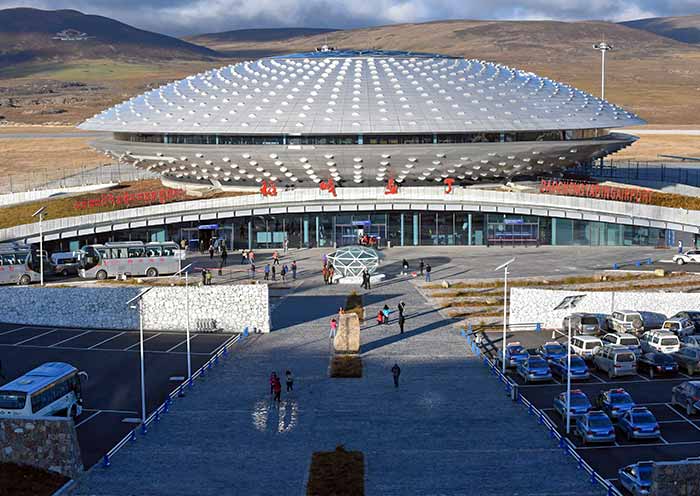
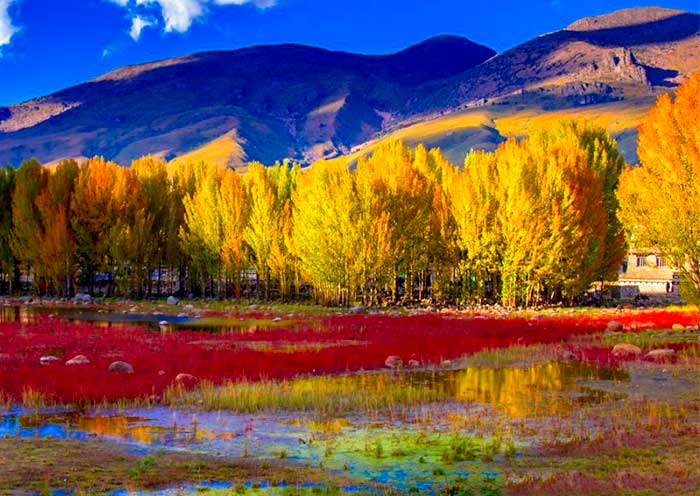
Do I Need A Permit to Visit Western Sichuan?
No, you do not need a permit to visit Western Sichuan. Although Western Sichuan is part of the Tibetan region, areas such as Kangding, Litang, and Danba in Western Sichuan do not require additional permits. As long as you have a valid Chinese tourist visa and a passport within its validity period, you can travel to Western Sichuan for sightseeing.
Note that the 144-hour visa-free policy for foreign visitors does not apply to entry into Western Sichuan if you enter through the Chengdu port of entry. However, you can still visit nearby popular attractions such as Mount Qingcheng, Dujiangyan, Emei Mountain, and Leshan.
Altitude of Western Sichuan & Tips to Against Altitude Sickness
Western Sichuan, although part of the Qinghai-Tibet Plateau, has an average elevation ranging from 2,000 to 3,500 meters. Some areas may have elevations exceeding 3,500 meters, but overall, the altitude is lower compared to Tibet.
In general, at altitudes below 3,000 meters, there won't be significant symptoms of altitude sickness. At elevations of 3,200 to 3,500 meters, mild symptoms may occur, but most people can adapt within a few hours. At altitudes above 3,500 meters, altitude sickness symptoms become more noticeable, including insomnia, headaches, and shortness of breath. It usually takes 1 to 2 days for most individuals to adapt to such altitudes.
Western Sichuan Altitudes (Exact Data)
| Attractions & Scenic Points | Elevation (meters) | Cities & Towns (for overnight) | Elevation (meters) |
|---|---|---|---|
| Yading Nature Reserve | 2,000 - 4,700 | Xinduqiao Town | 2,500 |
| Mt. Siguniang | 2,900 - 3,800 | Kangding City | 3,300 |
| Wolong Panda Base | 1,700 | Yajiang County | 2,500 |
| Danba Tibetan Village | 1,900 - 2,200 | Lithang County | 4,010 |
| Tagong Grassland | 3,500 - 3,700 | Daocheng County | 3,750 |
| Moshi Stone Park | 3,500 | Danba County | 1,900 |
| Mugecuo Scenic Area | 2,600 - 3,700 | Siguniang Town | 3,100 |
Tips to mitigate the effects of altitude sickness
- Gradual Ascent: Allow your body time to acclimatize by gradually ascending to higher altitudes. Avoid rapid ascents, especially if you are coming from lower elevations.
- Stay Hydrated: Drink plenty of water to stay hydrated at high altitudes. Avoid excessive caffeine and alcohol consumption as they can contribute to dehydration.
- Rest and Pace Yourself: Take regular breaks and rest when needed. Avoid overexertion and take it easy during the first few days at high altitudes.
- Medication: Consult with your healthcare provider before traveling to high-altitude regions. They may prescribe medications like acetazolamide (Diamox) to help prevent altitude sickness. Follow the prescribed dosage and guidelines.
- Avoid Alcohol and Smoking: Alcohol and smoking can further worsen symptoms of altitude sickness. It's best to avoid them during your time at high altitudes.
- Eat Light and High Carbohydrate Meals: Opt for light, easily digestible meals that are high in carbohydrates. Avoid heavy and greasy foods that can make you feel more uncomfortable at high altitudes.
It's important to prioritize your health and safety when traveling to high-altitude regions in Western Sichuan. By taking necessary precautions and allowing your body time to adjust, you can have a safe and enjoyable experience in this stunning part of China.
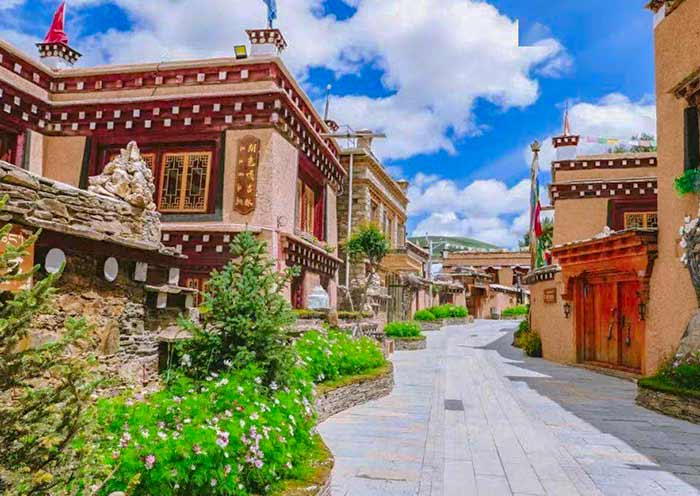
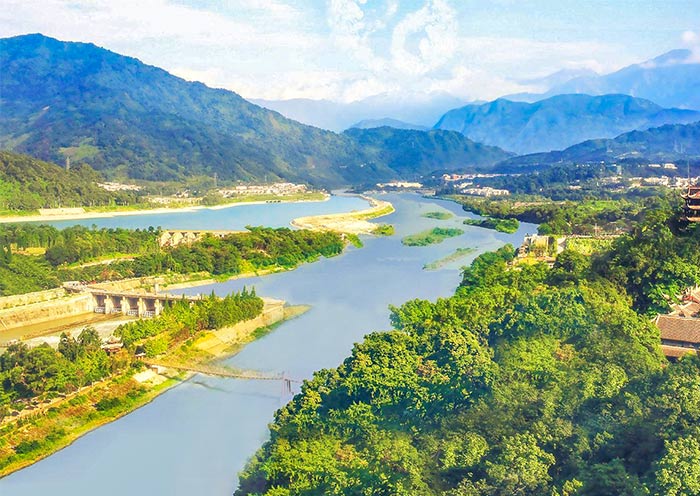
Join AOT (Asia Odyssey Travel) on an incredible expedition through the enchanting landscapes of Western Sichuan. Prepare to unveil hidden treasures, immerse in the awe-inspiring beauty of untouched valleys and majestic mountains, and immerse yourself in the vibrant tapestry of Tibetan culture. Are you ready to embark on this extraordinary journey of discovery? Let us guide you through the wonders of Western Sichuan and create memories that will last a lifetime.
With our extensive experience and expertise in Western Sichuan, Asia Odyssey Travel offers a range of carefully curated tour packages to suit every traveler's preferences.
Highlights of Western Sichuan: Mount Siguniang, Danba Tibetan Village, Hailuogou Glacier Park, Daocheng Yading, and Tagong Grassland
Tour Packages: Western Sichuan Tours, Daocheng Yading Tours, Mount Siguniang Tours
Tailored Experiences: Our experienced guides will accompany you, sharing fascinating insights and stories along the way, ensuring a seamless and enriching travel experience.
Logistics Made Easy: From transportation arrangements to accommodations, we take care of all the logistics, ensuring a smooth and comfortable journey through Western Sichuan.
24/7 Assistance: Our dedicated team is available round-the-clock to provide support and address any inquiries or concerns you may have during your trip.
Prepare to be captivated by the awe-inspiring landscapes and immerse yourself in the rich Tibetan culture of Western Sichuan. Let AOT be your trusted companion as we unveil the wonders of this region, creating memories that will last a lifetime. Join us on this extraordinary journey and let the magic of Western Sichuan unfold before your eyes.
